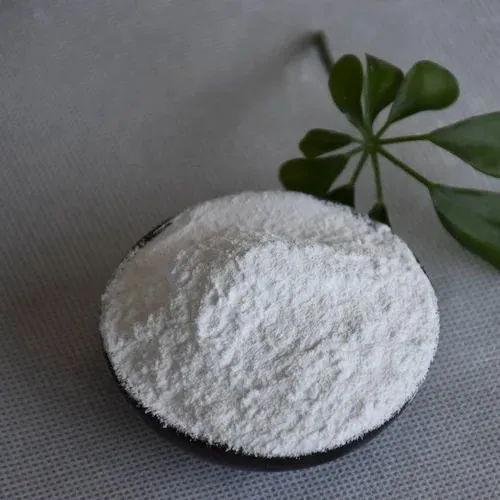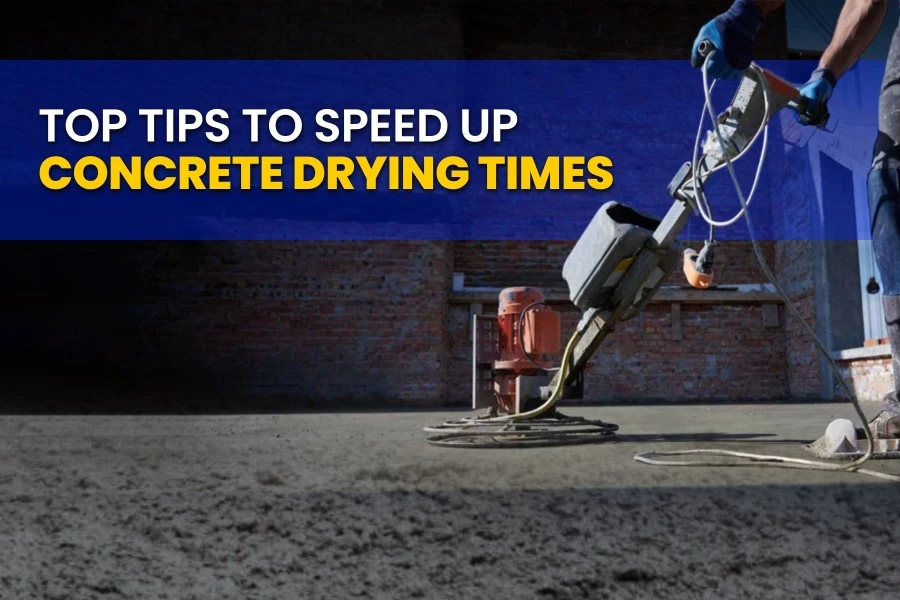The time it takes for concrete to dry is critical to the success of a construction project and for maintaining proper flow. Drying delays can stretch schedules, increase costs, and interrupt workflow, which can complicate the entire project.
For concrete flooring installers on a large construction project, drying time isn’t just a technical detail; it considers quality assurances of the concrete as well as another important in maintaining client satisfaction and job profitability.
Table of Contents
Most of us understand the old school rule: About 28 days to dry for an inch of thickness of concrete. That gives us a good general guide; however, real-life situations on-site are often different than textbook examples. Everything from humidity and temperature to the mix design can drastically change the drying time.
Forcing the process can lead to fairly significant issues, which may include adhesive failure, warping of the floor, cracking, mold issues, and costly repairs. However, when you know what you are doing and when, you can get concrete to dry very quickly and not lose quality.
In this guide, we will explain the proper ways to improve drying times and discuss the important topics, including:
The Difference Between Curing and Drying
What are the best practices prior to placing the concrete, and what to follow through on once the pour starts
While some methods to test moisture levels are accurate, you may be surprised as to what the ASTM claims to be accurate!
Graduated and gradual settings on dosages, work horses to speed up drying times (accelerating admixtures and dehumidifiers), and remove the water faster!
Let’s dive into smarter ways to get your concrete dry, fast.
Curing vs. Drying: Know the Difference
There are many people who use the term “curing” and the term “drying” synonymously, but they represent two different processes:
Curing is the chemical action (hydration) between cement and water. It develops strength in the concrete and is able to carry loads.
Drying is the physical action of moisture evaporating from the surface of the slab.
It is important to understand that concrete cures in approximately 28 days, but drying can take much longer depending on the circumstances. Additionally, your slab may feel hard but is potentially still holding moisture deeper in the slab.
So why is this important? Because if you install flooring on top of a slab that hasn’t dried completely, you will run into significant issues like bubbling up the adhesive or mildew underneath the vinyl tiles.
How Long Does Concrete Actually Take to Dry?
In perfect conditions- low humidity, warm air, and good airflow, your concrete may dry within the expected 28-day time frame. In most cases, moisture trapped in the slab can take months to emit into the surrounding environment.
Concrete can be ready for foot traffic in as little as 48 hours, but that does not mean it is dry enough for a flooring installation or finishes.
To truly gauge when it is ready, you must go deeper than just the surface.
How Concrete Dries: The Science Behind It
Drying occurs via evaporation.
As the water film in the concrete evaporates away, the moisture that was inside the concrete slab moves up through the capillaries to replace it. If the air around the slab is too humid, it can slow or even completely stop evaporation.
So just because the top of the slab is dry, it doesn’t mean the entire slab is dry. In fact, if there is moisture below the surface, it can later seep up and damage flooring or finished surfaces.
What You Can Do to Dry the Slab Before the Pour?
Lower the Water/Cement Ratio: Using more water than you need can slow down drying. Use the lowest water/cement ratio to produce a workable concrete mix.
Use Mixes with More Cement Content: Mixes with more cement will dry faster, but can shrink more and produce cracks.
Don’t Use Lightweight Aggregates: These types of aggregates will absorb and retain more moisture. Try synthetic aggregates instead, which shouldn’t contribute as much moisture.
Don’t Use Sealers (If Possible): While curing compounds and sealants, and any bond-breaking agents may serve a limited purpose, curing compounds trap moisture inside their layers, and are one factor that should be avoided if possible when wanting to dry a slab quickly.
Accelerating Admixtures: Admixtures that accelerate a cement-based mix (Calcium Chloride) work to reduce the setting time of the mix; they can also be helpful in cold conditions.
What You Can Do After the Pour?
Once you have cured the concrete, your next challenge will be drying it effectively, and here’s how to do that.
Enclose the Area- Enclosing the area means you can fully control temperature and humidity.
Utilize HVAC Systems- Once the area is enclosed, you can have heating or air conditioning and control temperature and relative ambient conditions.
Heat will lower humidity by increasing the air temperature, while an air-conditioned environment will function as a dehumidifier and lower the humidity in the air.
Use Dehumidifiers- Dehumidifiers pull moisture from the air and keep evaporation moving.
Air Circulation- Circulation with fans continues air movement throughout the slab and slows the chances of pockets of humid air that are slowing evaporation.
Flooring Underlayments- Can consider breathable membranes that allow moisture on the pure side to escape, but not enough to damage the flooring.
Moisture Testing: Why You Can’t Just Look At It
You can’t look at the slab to determine if it’s dry. Although the surface may look fine, the interior is what really matters, and this is why it’s critically important to precisely test before you install any flooring.
ASTM F2170 – The RH Test
Currently, the most accurate method is the in situ relative humidity (RH) test, which uses probes. The process involves;
Drilling holes in the slab
Inserting the RH sensors to the 40% depth (drying single-sided)
Allow the relative humidity sensors to equilibrate for 24 hours.
After equilibration, the probes will furnish an accurate measurement of internal RH. Devices such as the Wagner Meters Rapid RH® L6 are popular within the industry for this test.
What makes this method preferable? It is a standardized, dependable, and documented method to produce uniform readings. It is also important to mitigate liabilities related to failed installations.
Just Wait?
Time is money. Just waiting for the natural process of evaporation without tools or methods to enhance it may take weeks or even months. Considering weather patterns and HVAC schedules, waiting can lead to unknowns, so use tools and knowledge to help you know the timeline.
Calcium Chloride and Accelerating Admixtures
Calcium Chloride
Calcium Chloride is one of the oldest and most commonly used accelerating admixtures in concrete. In essence, it is designed to accelerate the hydration process, which is useful for producing a quicker set time, especially in cold weather.
Calcium chloride is also best used with caution within steel-reinforced concrete because of the potential for corrosion, but it can enhance faster drying in non-reinforced applications.


Other Accelerating Admixtures
Today, many chloride-free options are available to speed up set and dry times without the risk of corrosion. These include formulations that:
- Advanced early strength gain.
- Accelerated set time.
- Promote early finishing and loading.
- Admixtures can be added on-site depending on the expected drying time schedule.
Moisture Mitigation Systems: A backup
What if your slab is still not dry enough when it’s time to put flooring down?
In some cases, you can utilize moisture mitigation systems that stop residual moisture from coming out of your slab and ruining your flooring materials.
While these are not a replacement for completely drying or curing a slab, it is a way to buy some time if your deadlines are close. Just be sure to use a quality system that will form a reliable vapor barrier.
Things to avoid to speed up drying:
Believing the Surface is the Whole Story: Even if the surface appears dry, moisture may still be lingering inside the slab.
Adding too much water when mixing: You could add unnecessary moisture that is removed from the slab by evaporation.
Using incorrect test methods: Calcium chloride surface test methods are outdated compared to using RH probes.
Rushing the Flooring Installation: Always wait for moisture test results before laying floors. Skipping this step can result in major repair costs later.
Conclusion
Drying concrete is both a science and an art. While you may have curing times built into your schedule for assignable 28 days, drying can happen much further down the road for long after the cure is complete, especially in humid or encased environments.
Fortunately, the drying process can be sped up significantly and still provide the desired qualities by utilizing accelerating admixtures, rate humidity testing, climate control, and other technologies.
You can leverage risk and avoid costly moisture-related damage to your floors while performing your work ahead of schedule and maintaining a high-performance product you provide consistently.
You can leverage these proven processes to minimize concrete drying time and put your project in the best position for long-term performance.
Sagar Telrandhe is a Construction Engineer with a B.Tech in Construction Engineering & Management. Passionate about infrastructure development, project planning, and sustainable construction, he specializes in modern construction techniques, project execution, and quality management, contributing to efficient and innovative building.

